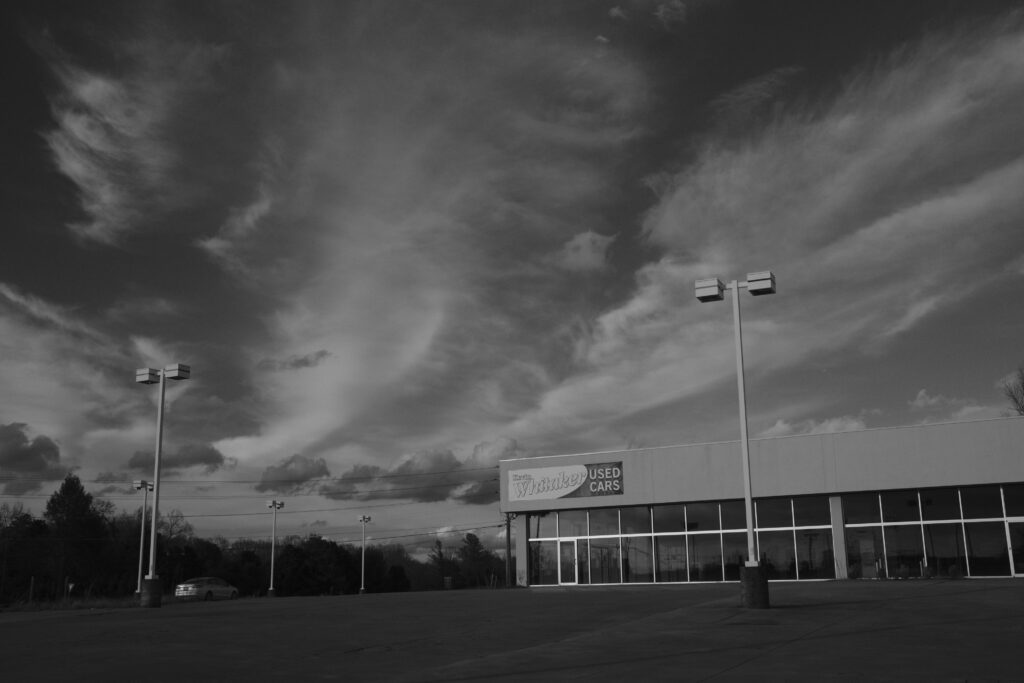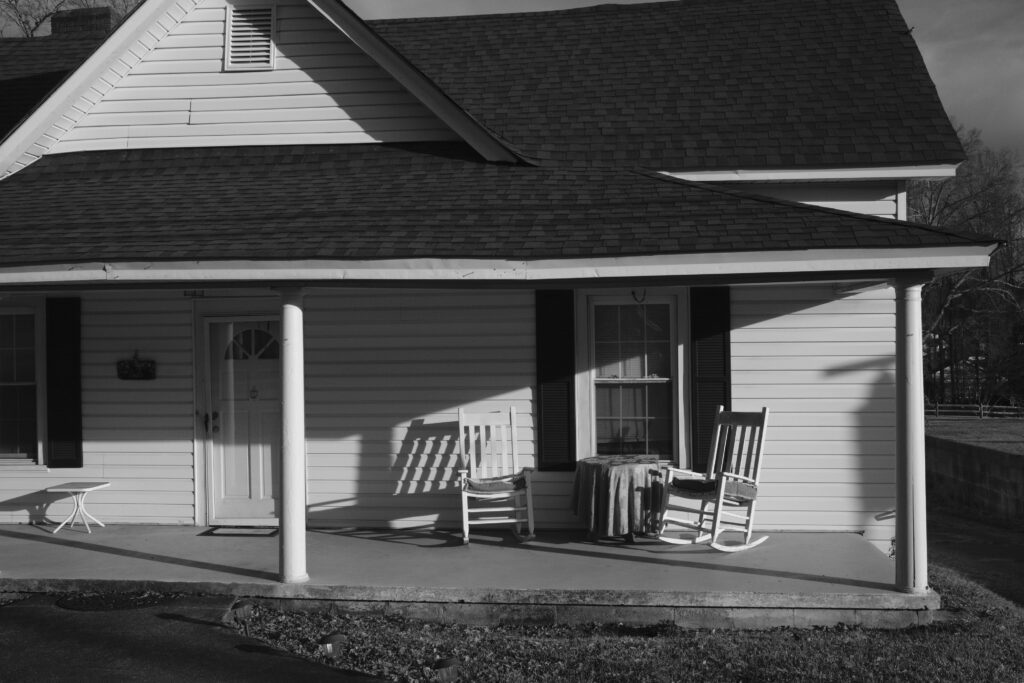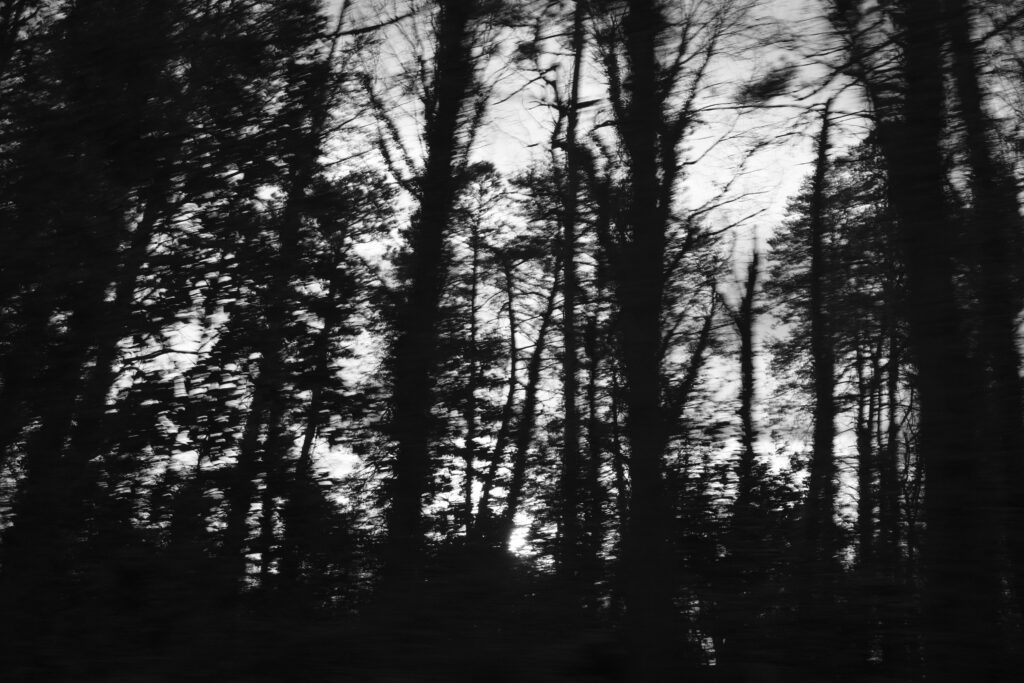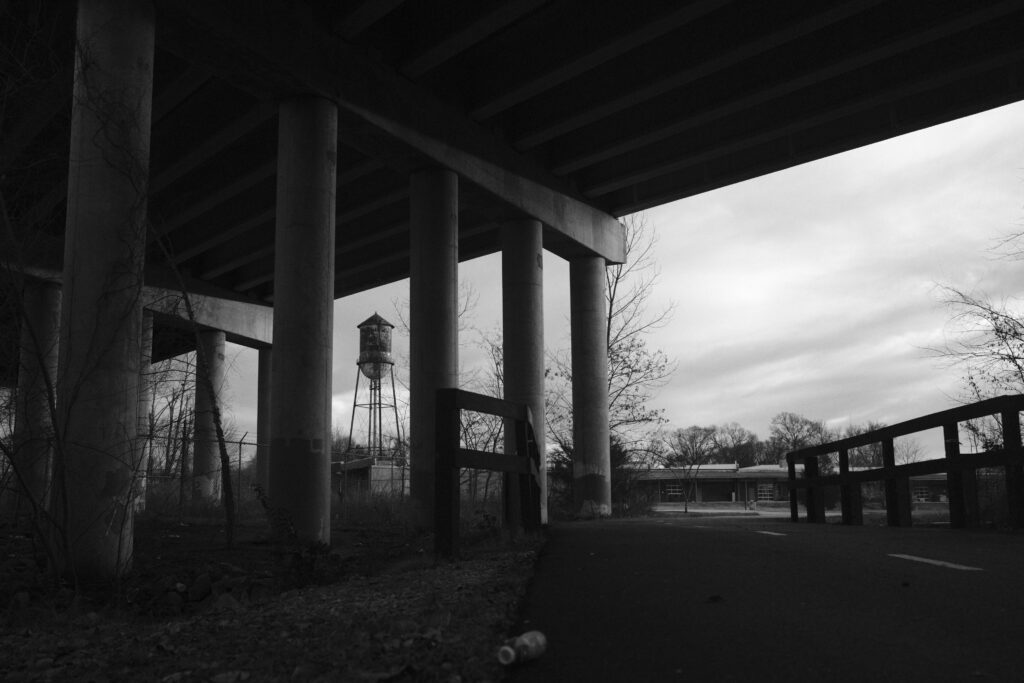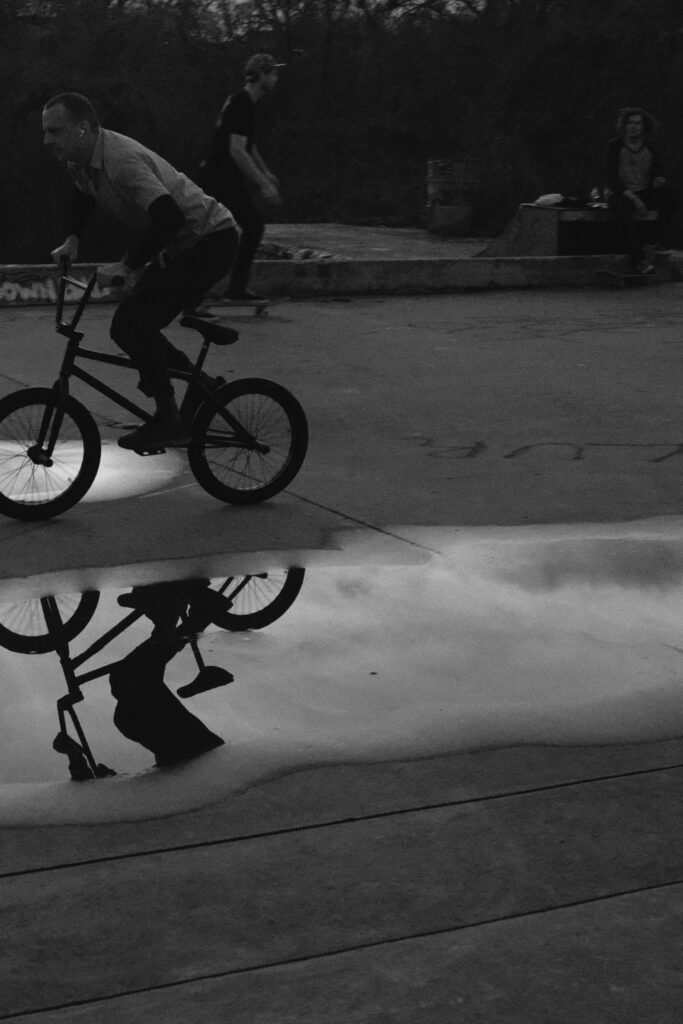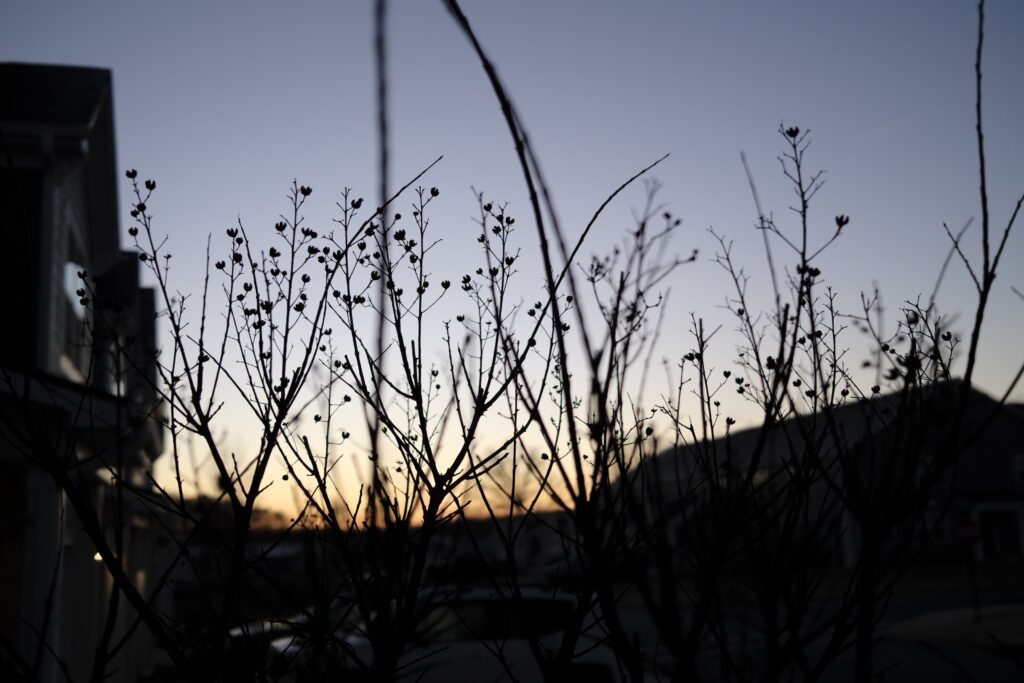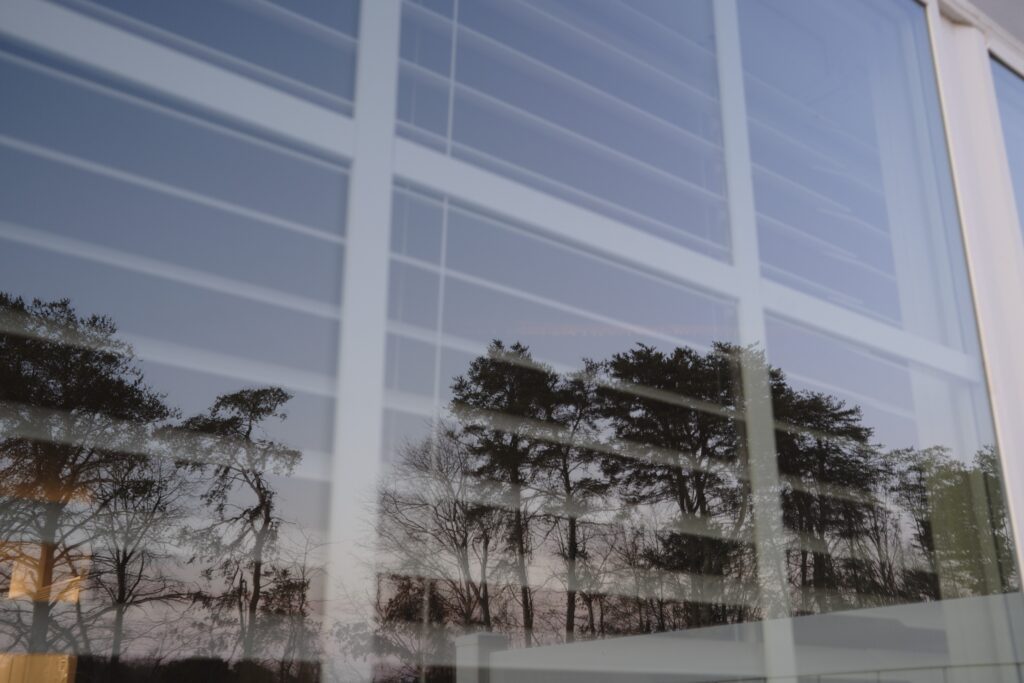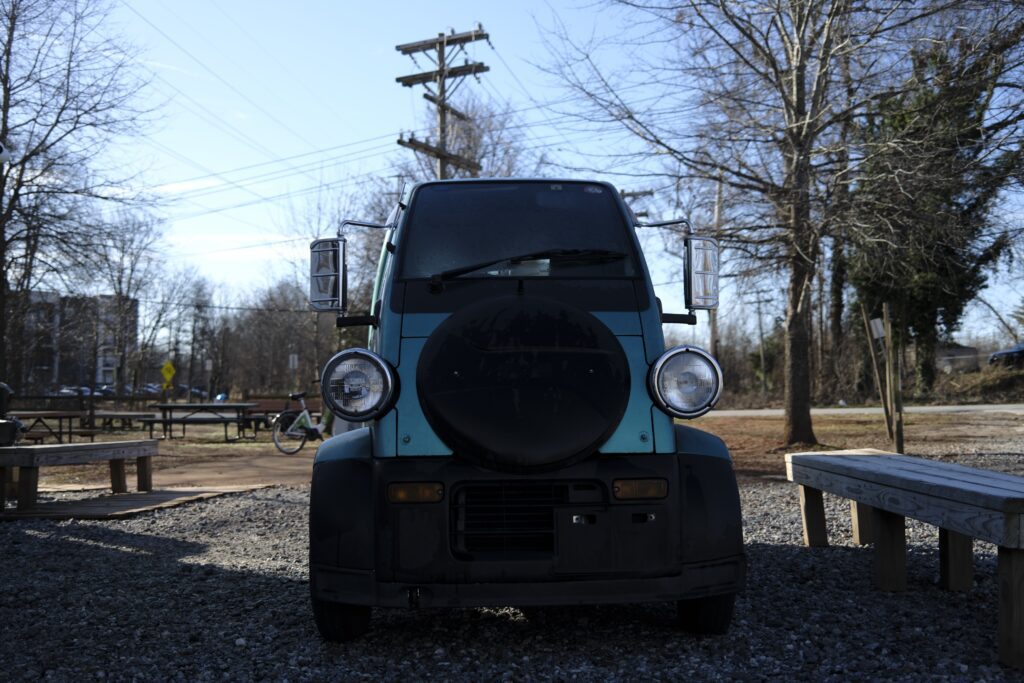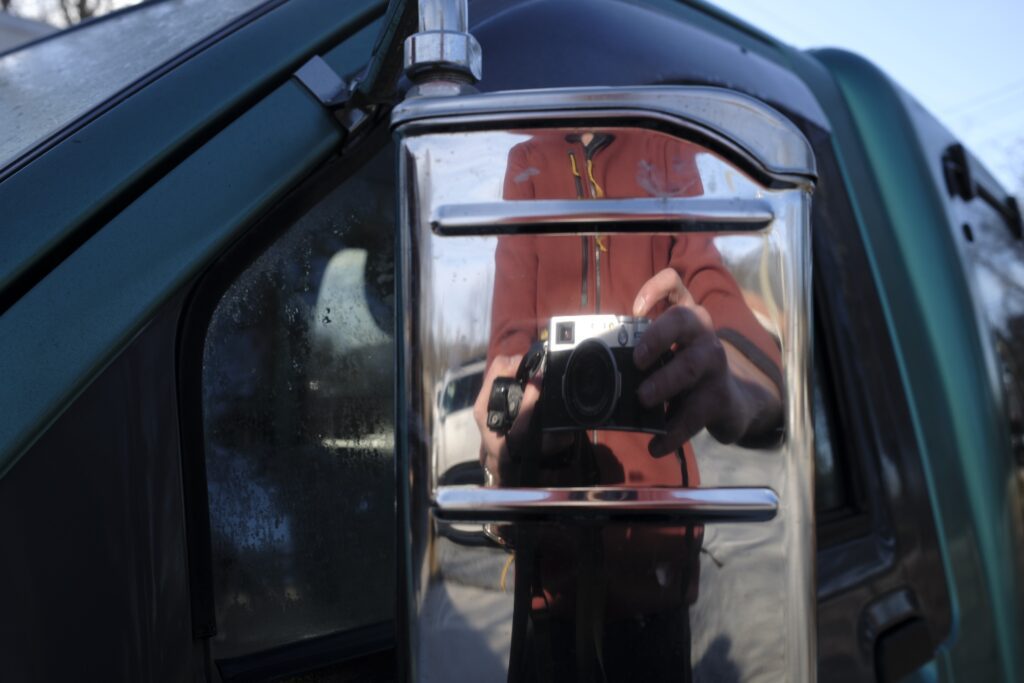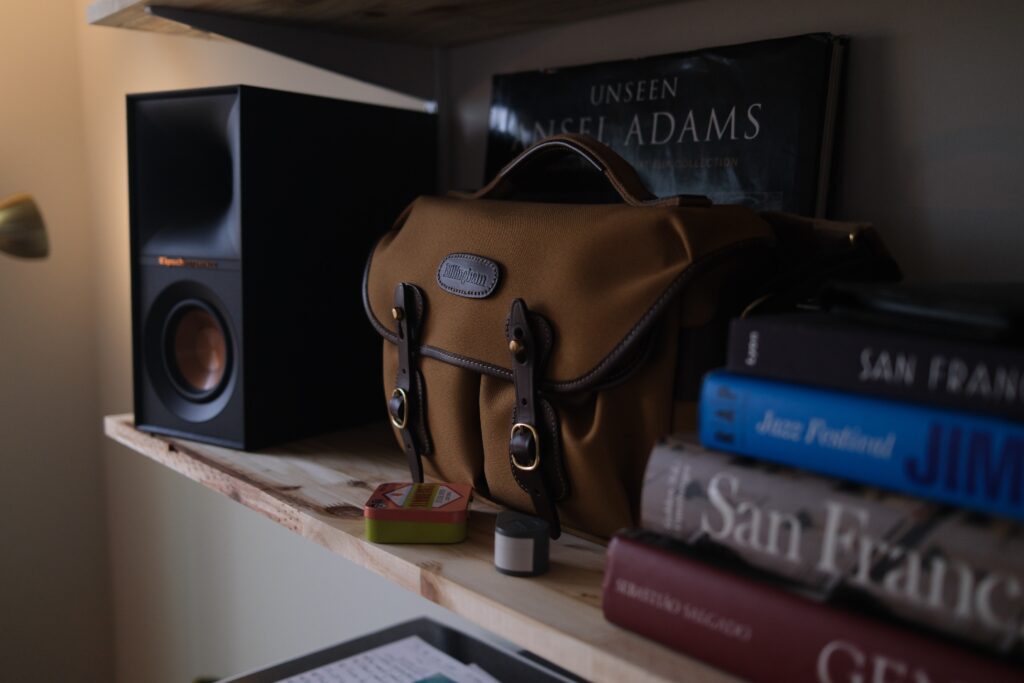I am excited to present an article on the recently released Fujifilm X100VI, undoubtedly one of the year’s most anticipated launches. I am familiar with the X100 series and certainly well-acquainted with Fujifilm. It is one of our favorite brands we carry at our Camera West stores, and for good reason. Fujifilm produces beautiful, reasonably priced, enjoyable photographic tools, including cameras and lenses, APS-C, and Medium Format. I’ve personally drug many Fujifilm cameras around on some far-flung adventures and trips and have always enjoyed them and the photos they help me produce.
This article is going to take a little bit of a different format. I’m going to talk about the Fujifilm X100VI’s forté as an everyday photographic tool rather than focus on its specifications or performance values. This is where the X100VI shines and where I personally have the most experience with the camera. If the X100VI were to make it into my kit one day, this is exactly how I would use it. Everyday.
My Journey To A Portable Everyday Photographic Tool
Next month marks ten years since I purchased my first X100 camera at our Camera West Store in Rancho Mirage. It was exhilarating. The X100 was my first rangefinder and camera with a large sensor that I could carry everywhere easily. The first X100 introduced me to a new perspective on cameras. Instead of viewing them as bulky tools carried in Pelican cases and backpacks, I began to see them as everyday photographic tools, enabling me to capture every moment and adventure. This could not have come at a more opportune time as I would meet my wife and daughter only a couple years later, capturing photos from our daily lives and regular adventures would become priceless.
Sadly, my first X100 only lasted about six months before I dropped it on concrete from a height of 3-4 feet, rendering it useless and too expensive to repair. Soon after, the X100S filled that void before I sold it to move on to a Leica M9, my first Leica M. Since then, I’ve owned the X100 through X100T, with the Leica M remaining a constant staple in my kit, but I’ve probably tried just about every camera that could fit in this “EDC” (everyday carry) category at some point in time.
The X100 introduced me to a whole new format of photography. I’m not talking about “digital,” “film,” “35mm,” or “Medium Format.” I mean, using a photographic tool that you become so comfortable with feels like an extension of you. I’ve tried, tested, and used many different cameras over the years at Camera West, but one thing remains constant: a rangefinder with a compact 35mm lens, lightweight and portable. This tool has become indispensable to the point where I’ll leave my wallet or keys at home before forgetting my “EDC Camera.” I can’t imagine living without one now.
Compact everyday photographic tools are not new. They’ve been around for over 100 years. The entire ethos of 35mm photography was born from the idea of a portable camera that could be used anywhere and in any scenario. However, when digital cameras were introduced, they most certainly became less popular. Brands like Contax, Yashika, Leica, Fujifilm, and more that were making compact 35mm film cameras died off or struggled to survive until tech could catch up and camera manufacturers could fit all the digital components into a small camera again.

I imagine my story is similar to many of yours. The X100 series, Leica X, Ricoh GR, and Leica Q have introduced us to tools that effectively serve as portable extensions of our own eyes. The X100 takes the top spot in this category of introducing such photographic tools. But let’s be clear, it’s not the only one, and it’s not the best for everyone, regardless of the “hype” surrounding this particular camera.
Intro To The Latest “Fujifilm X100” – the X100VI
Fujifilm kindly sent me their X100VI for a pre-production review. To be completely honest, you can find a list of specs, performance reviews, focus speed comparisons, MTF charts, and all that technical jargon all over the internet.
However, this camera’s ethos is not about the specs. So, I won’t focus on those details, which you can find on our product listing at Camera West and other blogs. I will be discussing the function of this camera as an Everyday Carry (EDC) tool, which it was designed to be. As a cyclist, I love bikes, and though I might look at the groupset, tires, wheels, and components when purchasing a new bike, none of that matters until I ride the bike and enjoy it. In the same way, this is my recollection of using the X100VI, having pushed 1200+ frames through the camera over a week, and my thoughts on its performance and, moreover, its function as the tool it was purpose-built for.

With that in mind, for context, let’s briefly summarize what’s new with the X100VI compared to the outgoing, incredibly popular, and frequently backordered X100V. In the X100VI, there are two main differences you should be aware of. I’ll include a quick comparison table of X100V vs. X100VI below for easy reference.
The Sensor
Fujifilm has upgraded the sensor in their latest model to match that of the Fujifilm X-T5, boasting 40.2 megapixels. This sensor features backside illumination for improved low-light performance. The increased pixel count and overall performance enhancements make for better low-light photography. While the outgoing 26-megapixel sensor on the X100V remains a solid choice, the new 40.2-megapixel X-Trans CMOS 5HR with X-Processor 5 is a notable improvement. It performs well, which is the most important aspect. This improvement highlights the beauty of modern technology in these cameras — it simply works.
The IBIS
Finally, while it’s unclear how, due to the size of the camera, the X100VI includes in-body stabilization (IBIS). Although you might overlook IBIS unless it’s missing, it is useful in low or slow shutter speed situations to maximize the available light. It’s a nice feature to have, even if it’s not entirely necessary.
Apart from these two points, the lens, finder, and controls remain largely the same. This is a tried and tested formula that works, so why would Fujifilm change it? However, I do have one gripe. The camera still uses the older W126S battery instead of the newer, higher-capacity W235 battery. I’d prefer a slightly larger camera to accommodate the newer battery, but that’s just me. Carrying around multiple W126S batteries, as I do with my X-Pro2 “beater” setup, works fine, and should not prove to be too much hassle. Additionally, we have USB-C charging on the X100VI now, making it easy to top off on the go from your mobile power bank or a USB outlet.
A Deviation From The Pocket Screen
Allow me to share my journey of deviating from the omnipresent screens in our lives and how that ties into a camera like the X100VI.

Over the past year, I’ve started distancing myself from the constant barrage of digital screens – be it my phone, my computer, or even my smartwatch. Much of my life revolves around screens, but I’ve now transitioned many of my everyday tools to their analog counterparts. I’m a strong advocate for pens and paper, and I’ve minimized my use of multi-screen setups. I’ve deleted social media apps from my phone, using them only from my browser when possible, and my Apple Watch Ultra is now only used for tracking outdoor activities when I don’t want to carry my phone. Most of the time, you’ll find a traditional analog watch on my wrist, a pen and notebook on my desk, and most importantly, a real camera in my bag or at my side.
The X100VI and similar cameras serve a purpose that I think is universal – the need for a break from the ever-present screen in our pockets. Photography is a way of life we all enjoy, and capturing moments has become a daily pleasure and a fundamental part of our modern existence. Photos are the language we use to narrate our past to the future, whether it’s time spent with friends, family, a partner, or simply alone during a hike in the woods. I find solace in disconnecting and using a camera like the X100VI, with its tactile buttons and dials, to document everyday life’s mundane yet meaningful moments. Fujifilm has done an excellent job with the X100VI, preserving this analog aesthetic for those of us who value “disconnected tools.”
Using the X100VI
To provide context, I’ll compare the ergonomics and functions of this camera to two others that are staples in my kit and see the most use – the Leica M 246 Monochrom and the Fujifilm X-Pro2. and the Leica Q2 was also a part of this lineup. I’ll discuss the price differences at the end.
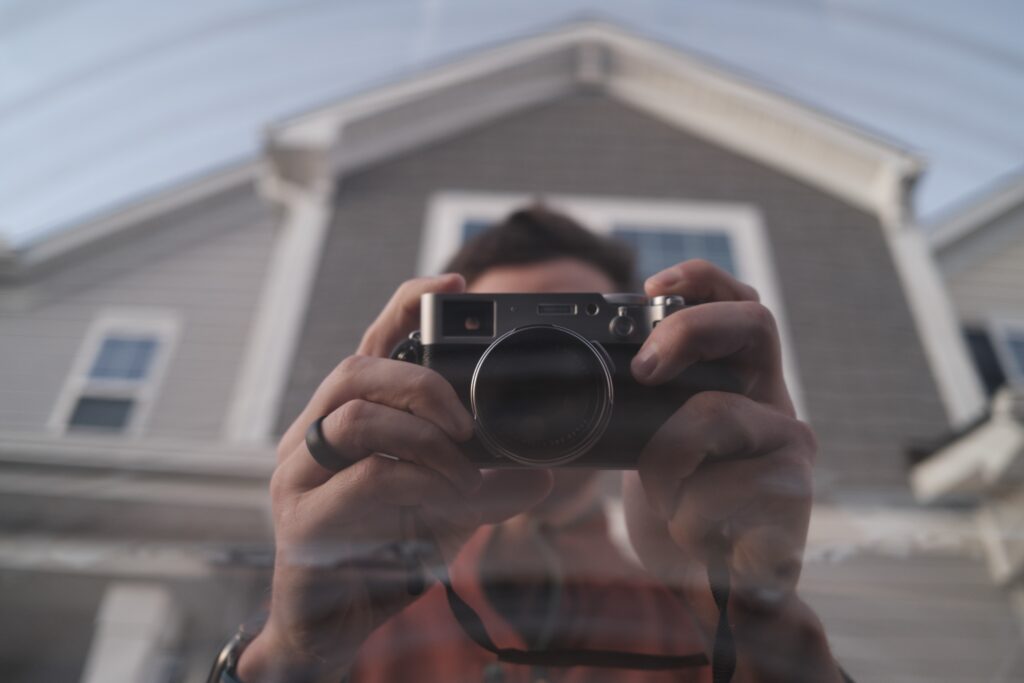
Note: I am excluding two notable cameras that I’ve extensively used over the past 3-4 years. I’m omitting the Ricoh GRIII camera because, in my experience and opinion, it lacks a viewfinder and doesn’t match the build quality and reliability of the X100VI. The Leica CL could also be a good comparison, but unfortunately, it’s no longer available. I’d prefer not to exacerbate the disappointment from the gap in Leica’s current offerings, which I hope they’ll fill soon.
Compared to a Leica M
I’ve been an avid user of the M camera for nearly a decade. To me, the M epitomizes this form factor of the camera. The Leica M is a purely mechanical device in function. I currently own a Leica M 246, which only captures in black and white, but we’ll focus on the function and ergonomics rather than the final output in this comparison.
The M, particularly the latest M11, emphasizes a more mechanical approach, with minimal menus and digital interference. This is partly because the Leica M lacks the autofocus options altogether, while the X100VI offers a plethora of AF options that I’ve never used or tried on the X100VI.
The M’s lack of autofocus creates a different user experience. If you’re new to the Leica M, expect a learning curve before you can consistently achieve focus. This is the key functional difference between the two cameras. Both the X100VI and Leica with comparable optics provide similar experiences, but the M is more hands-on. It’s like comparing driving a 5-speed manual car (Leica M) to one with an automatic transmission and paddle shifters (X100VI). Both options will get you to your destination, but the method of getting there depends on your preference.
The Leica M is more hands-on, manual, minimal, slightly larger, and, of course, more expensive than the X100VI – although the pre-owned M market is currently quite good. Consider these factors when making your decision.
Compared to the X-Pro2 or any other interchangeable lens X camera.
I’ve had an X-Pro2 with a 27mm f2.8 WR lens for the past year as my “beater camera.” This is the camera I use for long bikepacking tours and camping trips or when I don’t mind leaving my bag in the car. I also have extensive experience with the latest X-T series cameras, enough to draw comparisons.

The X-Pro2 and 27mm make a great combination. I can operate the entire camera blindfolded, and it functions well as a snapshot camera. I’m a big guy, so the slightly larger body fits better in my hands than the X100VI, but this won’t be the case for everyone.
The autofocus on the X100VI is comparable to the X-T5 in my experience. This is a significant upgrade from my X-Pro2, but I find the slower function of the X-Pro2 to be part of its charm. Similarly, while the 40.2mp images from the X100VI are better than the 24mp images from my X-Pro2, the 24mp images are good enough and have a lot of character, especially with a good preset from Fuji-X Weekly.
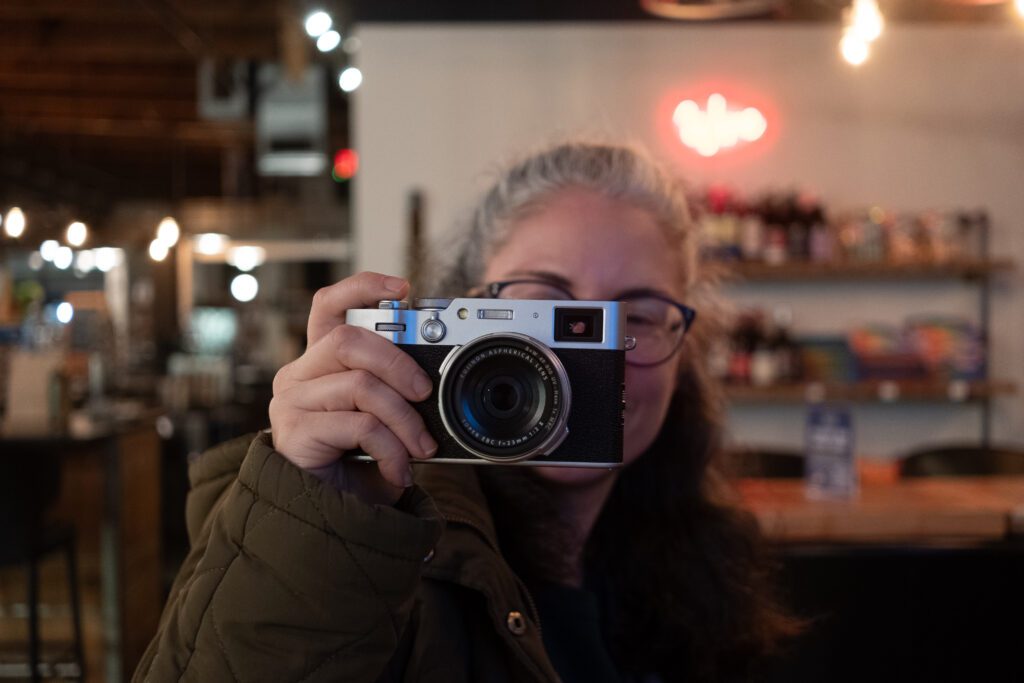
The interchangeable lens X cameras offer more variety. You’re not limited to a 35mm equivalent lens, and I find the 27mm f2.8 to be slightly better optically than the 23mm on the X100VI. With the F2 WR X-series lenses and the 27mm f2.8 WR, you have small, excellent optics that keep the X-T or X-Pro cameras small enough for daily use.
I prefer the dual card slots on the X-Pro2 and almost any other high-level X-series camera. I wish they had added dual card slots or internal memory in addition to a card slot on the X100VI, but at this price point, it’s hard to argue for such features.
The viewfinder experience between any X-Pro camera and any X100 camera is similar. It’s not as good as an M camera, but it gets the job done, and you get used to it after a while.
If you prioritize changing lenses or find the X100VI too small for your hand, I’d recommend an interchangeable lens X camera. The end results will be very similar, especially given that the X-T5 shares many of the same internals. Additionally, if you want a slight value-for-function ratio, you might check CW’s selection of pre-owned X-Series gear. There are some cameras and lenses out there you can get for less than an X100VI and still enjoy!.
Compared to the Leica Q2
The Q2 is a notable contender among fixed-lens cameras, albeit at a different price point. I used the Q2 Monochrom almost exclusively for a couple of years (2020-2021) and also used a Q2 extensively last year.
The Leica Q2, with its full-frame sensor, is larger. This could be a benefit or a drawback, depending on your needs. I found the X100VI to struggle more than my Q2 in challenging light situations and certainly more than the Q3. While the resolution on these cameras is comparable, Q2 images offer more flexibility, especially when increasing the ISO, most likely due to the larger pixels on the full-frame sensor of the Q.
The lenses differ slightly: the Leica Q has a 28mm f1.7 Summilux, while the Fujifilm X100VI features a 23mm f2, roughly equivalent to a 35mm in full frame terms. I prefer a 35mm focal length, but that hasn’t deterred me from using the Q2. The Q cameras can easily crop down to 35mm, and I often use them in that mode. However, Leica optics outperform Fujifilm’s, particularly wide open. The depth of field rendered by any Leica Q is significantly better than on the X100VI, but again, there is a big delta here on price point.
One advantage the X100VI has over the Q2 and Q3 is a built-in ND filter. While an ND filter on the Q cameras would be beneficial, its absence isn’t a major drawback. I found navigating the X100VI menus more challenging, even though I’m familiar with Fujifilm’s menus and controls. Leica’s controls and menus are simpler and more straightforward, which I prefer.
Ultimately, I prefer the images produced by the Q (of any generation), but at the time of publishing this article, a pre-owned Q2 is priced more than double the X100VI and even higher for a Q3. While the X100VI falls short in the optics department, it’s a smaller camera, which could be appeal to many, although not a deciding factor for me personally, as the Leica Q is adequately small for an EDC photographic tool.
Addressing the hype: I’ve slightly alluded to the buzz surrounding the X100 series in this article. While it’s beneficial for Fujifilm as it generates steady income, it may not always be the best for us consumers. If you already own an EDC camera, keep using it. If you want an X100VI, go ahead, but don’t let that stop you from using your current camera.
For those new to EDC photographic tools of this nature, if the wait time for this or any other camera is long, consider other options. Look at the other cameras I’ve mentioned. It’s better to get a camera now and start capturing moments, refining your craft, and embarking on adventures than waiting for a specific model.
This camera isn’t a financial investment like a Vintage Rolex Submariner. Its value will depreciate over time, so it’s best to get a camera that you can use and enjoy immediately. Thankfully, the secondary market is better than ever, and one of the cameras mentioned prior in this article can be had at incredible prices, including the X100V in the coming days.
Conclusion
The Fujifilm X100VI is a commendable upgrade to the X100 camera line. Fujifilm has maintained its successful formula with this model, a decision that I respect. Minimal changes were needed, and the consistent price point added to the X100VI’s appeal.
I hope this article doesn’t seem too biased towards any particular brand; there are merits to all the systems I’ve compared the X100VI with. If you’re just starting to explore dedicated everyday photographic tools like I was a decade ago, welcome! But remember, the X100VI is not your only option. It’s an excellent product from Fujifilm, likely to be popular, but through this article and our extensive pre-owned selection at Camera West, I hope you’ll find a camera that suits your needs right now. Don’t delay – get an everyday photographic tool that works for you and use it. Everyday.
Photos From The X100VI
Please note that these were taken with a production camera using pre-production firmware. Raw image support had not been released at the time of this article, so these are unedited JPEGs straight from the camera.
The Fujifilm X100VI can be purchased through Camera West stores. At the time of writing this article, the camera was only available for pre-order, which can be done by contacting Camera West directly or signing up for stock notifications through the website.
Benjamin Carpenter





